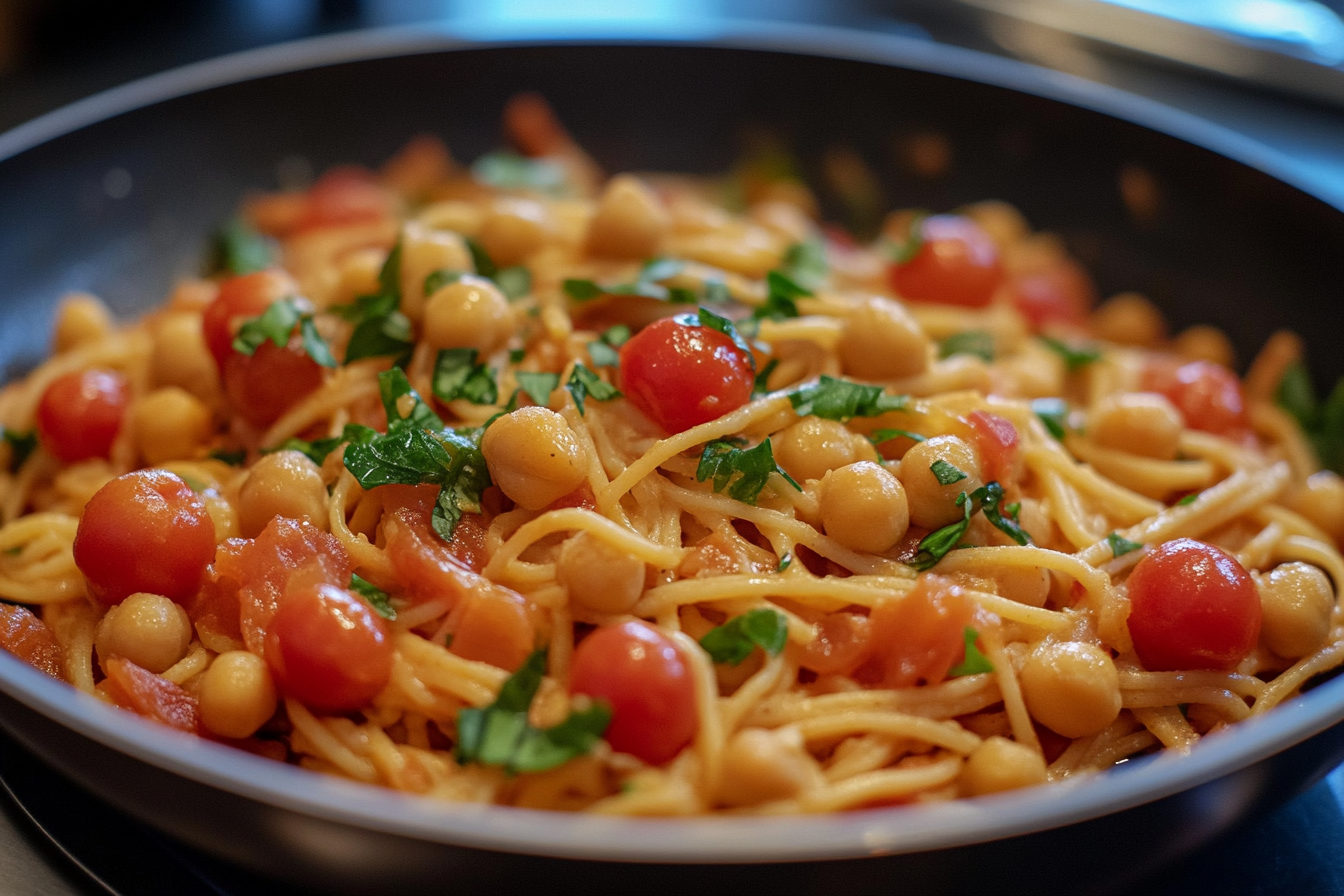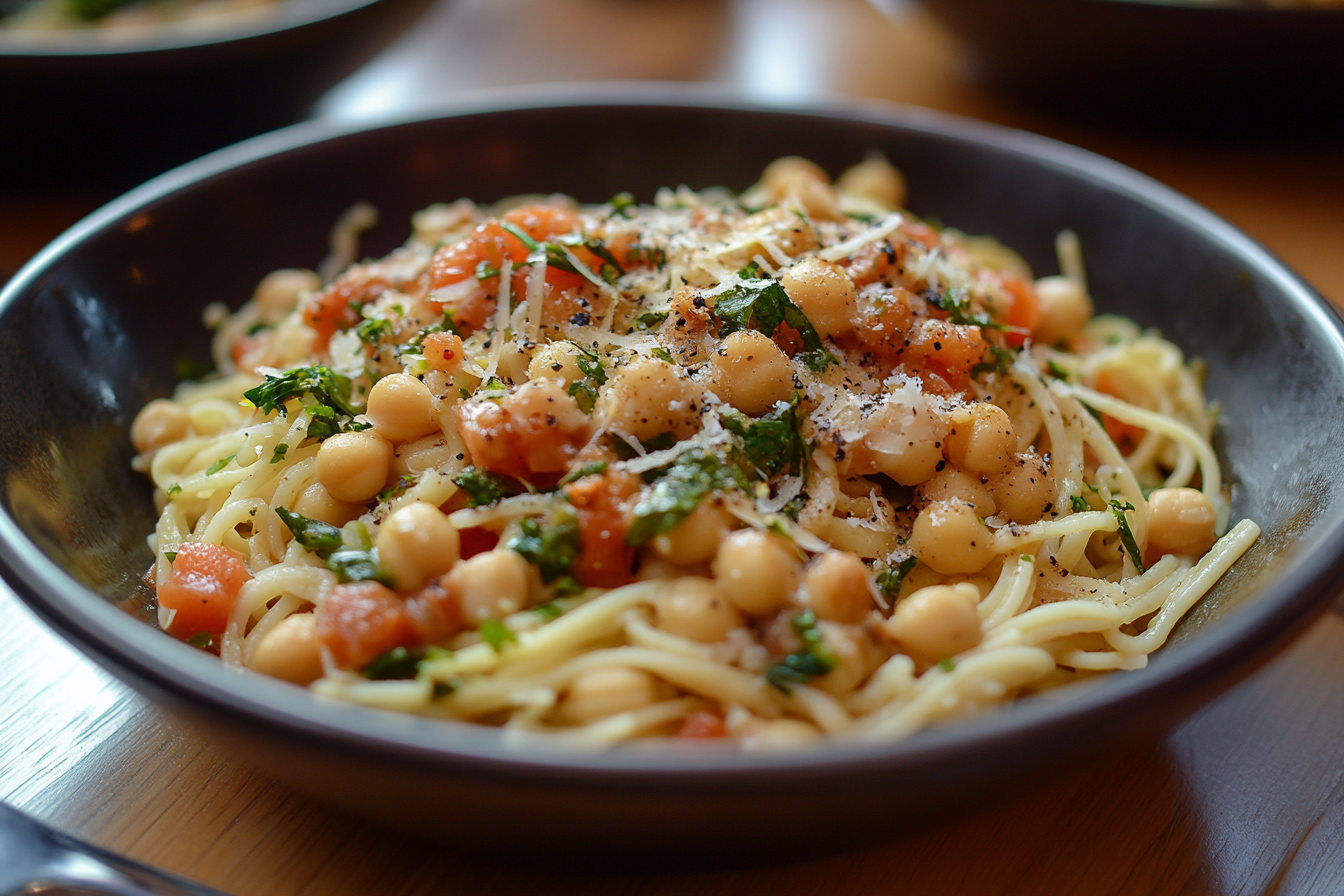Legume-based pasta, such as chickpea pasta, has become a favorite among those who seek healthier meal options. Made primarily from chickpeas, it offers a nutritious alternative to traditional wheat pasta, boasting high protein, fiber, and essential vitamins. Whether you’re looking for a gluten-free, plant-based option or just want a healthier pasta, this type of pasta is an excellent choice. This guide covers its benefits, cooking tips, and ways to include it in your diet.
What is Chickpea Pasta?
This legume pasta is made mainly from ground chickpeas. Some varieties may include other ingredients like tapioca or xanthan gum to improve texture. Unlike pasta made from wheat flour, it is high in protein and fiber, making it more nutritious. It is perfect for those with dietary needs, including gluten intolerance, vegan diets, or anyone wanting to cut down on refined carbs.
Nutritional Highlights of Legume-Based Pasta
Legume pasta, particularly one made from chickpeas, stands out because of its rich nutrient content, making it a healthier choice compared to regular pasta. Here are the main benefits:
- High in Protein: It offers about 13-15 grams of protein per serving, which helps with muscle growth and repair. This is especially good for vegetarians and vegans needing plant-based protein.
- Rich in Fiber: Provides around 8 grams of fiber per serving, aiding digestion, promoting gut health, and helping you feel full longer.
- Low Glycemic Index: This pasta helps manage blood sugar levels due to its low glycemic index, making it ideal for those with diabetes or those who need stable energy levels. To understand more, read about the Glycemic Index and its benefits.
- Loaded with Vitamins and Minerals: It includes important nutrients like iron, potassium, and B vitamins, which support energy production, immune function, and overall health.
How It Compares to Other Pasta Types
Compared to other pasta, such as those made from lentils, black beans, or edamame, chickpea pasta has unique advantages:
- More Protein: This pasta has more protein than rice or corn-based gluten-free pasta, making it a better choice for those seeking extra protein.
- Higher Fiber: It typically contains more fiber than wheat pasta, which aids digestion and keeps you satisfied.
- Better Texture: It has a smoother texture than many other legume-based pastas, making it easier to switch from traditional pasta. Therefore, it’s often preferred by those trying legume pasta for the first time.
Why Choose High-Protein Pasta for Your Diet?
Adding legume pasta to your diet can boost your health in several ways:
- Supports Muscle Health: Its high protein helps build and maintain muscles, making it ideal for athletes and those increasing their protein intake. To learn more, check out the Benefits of High-Protein Diets.
- Improves Digestion: The fiber in this pasta supports regular bowel movements and reduces common digestive problems like bloating. Moreover, it helps prevent constipation, which is a common issue when switching to low-fiber diets.
- Aids Weight Management: Because protein and fiber help control hunger, this type of pasta makes it easier to manage portion sizes and support weight loss. This is especially useful for those trying to follow a balanced diet without feeling deprived.
- Perfect for Gluten-Free Diets: As a naturally gluten-free pasta, it’s safe for those with celiac disease or gluten sensitivity. Unlike some gluten-free options that are high in simple carbohydrates, it offers a balanced nutritional profile.
- Heart Health: The fiber content can help lower cholesterol, reducing the risk of heart disease. Fiber binds to cholesterol in the gut, preventing it from being absorbed into the bloodstream.
For additional healthy meal ideas, see tips on creating the perfect fruit platter that complements these pasta dishes perfectly.
Potential Downsides of Chickpea-Based Pasta
While this pasta type has many benefits, there are some drawbacks to consider:
- Digestive Issues: Some people may experience bloating or gas due to the high fiber content, especially if they are not used to high-fiber foods. Introducing it gradually can help minimize these effects.
- Higher Calories: Though nutrient-rich, it can be higher in calories compared to other alternatives. Therefore, portion control is important if you’re watching your calorie intake.
- Allergic Reactions: Chickpeas are legumes, so individuals with legume allergies should avoid this pasta. Always check labels for any additional allergens, especially if other ingredients are added.
Best Ways to Cook Legume-Based Pasta
Properly cooking this type of pasta ensures the best taste and texture. Here are some helpful tips:
- Use Plenty of Water: Legume-based pasta releases starch during cooking, so using enough water prevents sticking. This step is crucial for maintaining the texture and flavor of the pasta.
- Avoid Overcooking: Cook the pasta al dente, as overcooking can lead to a mushy texture. Follow the cooking time on the package for best results, and taste-test the pasta towards the end of the cooking time.
- Rinse After Cooking: Rinsing removes excess starch, improves texture, and prevents clumping in cold dishes like salads. For more tips, check out How to Cook Pasta Perfectly.
- Season the Water: Salt the cooking water to enhance the pasta’s flavor. Additionally, adding olive oil can help prevent the pasta from sticking.
- Test for Doneness: Check the pasta a minute or two before the suggested time to ensure it’s cooked to your liking. This step can help prevent overcooking, especially if you plan to use the pasta in a reheated dish.
Top Brands of Gluten-Free Pasta
Choosing the right brand can affect your cooking experience and enjoyment. Here are some of the best chickpea pasta brands:
- Banza: A popular choice with various shapes like penne and spaghetti. It’s known for its great taste and availability in many stores. Additionally, it holds up well in various dishes, making it versatile.
- Barilla: Offers a smooth texture similar to traditional pasta, making it a good option for those new to chickpea pasta. Furthermore, Barilla’s legume-based pasta is widely recognized for its consistent quality.
- Explore Cuisine: Provides organic options with clean ingredients, ideal for those looking for non-GMO products. Explore Cuisine also offers different shapes that are perfect for salads and hearty pasta dishes.
For a hearty pairing, try your pasta with a tasty brisket sandwich for a well-rounded meal.
Tasty Recipes Using High-Protein Pasta
Chickpea-based pasta is versatile, fitting into many dishes. Here are some delicious recipes to try:
- Creamy Garlic Pasta: A rich, creamy dish with garlic, spinach, and parmesan that highlights the pasta’s mild flavor. You can also add grilled chicken or tofu for extra protein.
- Mediterranean Pasta Salad: Combine this pasta with tomatoes, cucumbers, olives, and a lemon vinaigrette for a refreshing, healthy salad. This recipe is perfect for meal prep because it keeps well in the fridge.
- Spicy Pasta with Roasted Vegetables: Toss legume pasta with roasted veggies and a spicy sauce for a warm, filling meal. Consider adding some fresh herbs like basil or parsley for an extra burst of flavor.
- Pasta with Pesto and Grilled Chicken: Mix pasta with pesto, grilled chicken, and tomatoes for a protein-packed, easy meal. This dish is great for quick weeknight dinners.
- Stir-Fry Pasta: Combine with stir-fried vegetables and a light soy or teriyaki sauce for an Asian-inspired dish. This option allows you to use whatever vegetables you have on hand.
- Primavera: Add fresh, seasonal vegetables and a simple olive oil and garlic sauce for a vibrant, veggie-packed meal. This dish is a great way to enjoy a light, colorful pasta meal.
Incorporating Chickpea Pasta into Your Diet
Here are some easy ways to add legume-based pasta to your meals:
- Swap It for Regular Pasta: Use it in any dish that calls for traditional pasta to boost nutrition. This simple swap significantly increases the protein and fiber content of your meals.
- Pair with Healthy Sauces: Enjoy it with marinara, pesto, or olive oil-based sauces for a balanced, delicious meal. Furthermore, try experimenting with homemade sauces to tailor the taste to your preference.
- Add Protein and Veggies: Mix with grilled meats or veggies to enhance both flavor and nutrients. Consider adding beans or tofu for a plant-based protein boost.
- Meal Prep: Cook a large batch at the start of the week and use it in different dishes. It keeps well in the fridge and reheats easily, making it perfect for lunches and dinners throughout the week.
- Cold Salads: This pasta works great in cold salads, staying firm and absorbing flavors well. Mix with fresh veggies and your favorite dressing for a quick, satisfying meal.
- Flavor It Up: Its neutral taste allows you to experiment with spices like red pepper flakes, garlic powder, or fresh herbs. This flexibility makes it adaptable to many cuisines, from Italian to Mediterranean and beyond.
Frequently Asked Questions (FAQs)
- Is this type of pasta healthy? Yes, it is high in protein, fiber, and essential nutrients, making it a healthier choice than traditional pasta.
- Does it taste good? It has a mild, slightly nutty flavor similar to regular pasta, especially when cooked correctly. Therefore, it pairs well with a variety of sauces and ingredients.
- Can it help with weight loss? Its protein and fiber help you feel full longer, supporting weight management by reducing snacking.
- Is it low-carb? While it’s lower in carbs than regular pasta, it’s not strictly low-carb. However, it offers more protein and fiber, which helps balance the impact of carbs.
- How does it compare to other legume pastas? Chickpea pasta is smoother and milder, making it a favorite for those new to alternative pasta. It’s also versatile, fitting well into various recipes from Italian to fusion dishes.
- Can it be used in Italian recipes? Yes, this pasta works well in any recipe, from simple spaghetti to more complex dishes like lasagna. Its texture holds up well in baked dishes, adding nutritional value without compromising flavor.
Conclusion
Legume-based pasta, especially one made from chickpeas, is a fantastic alternative to traditional pasta, offering multiple health benefits while maintaining the taste and texture you love. Whether you need a gluten-free option, more protein, or just want to try something new, chickpea pasta is a delicious and nutritious addition to your meals. So, enjoy it in your favorite dishes and experience its many benefits!



